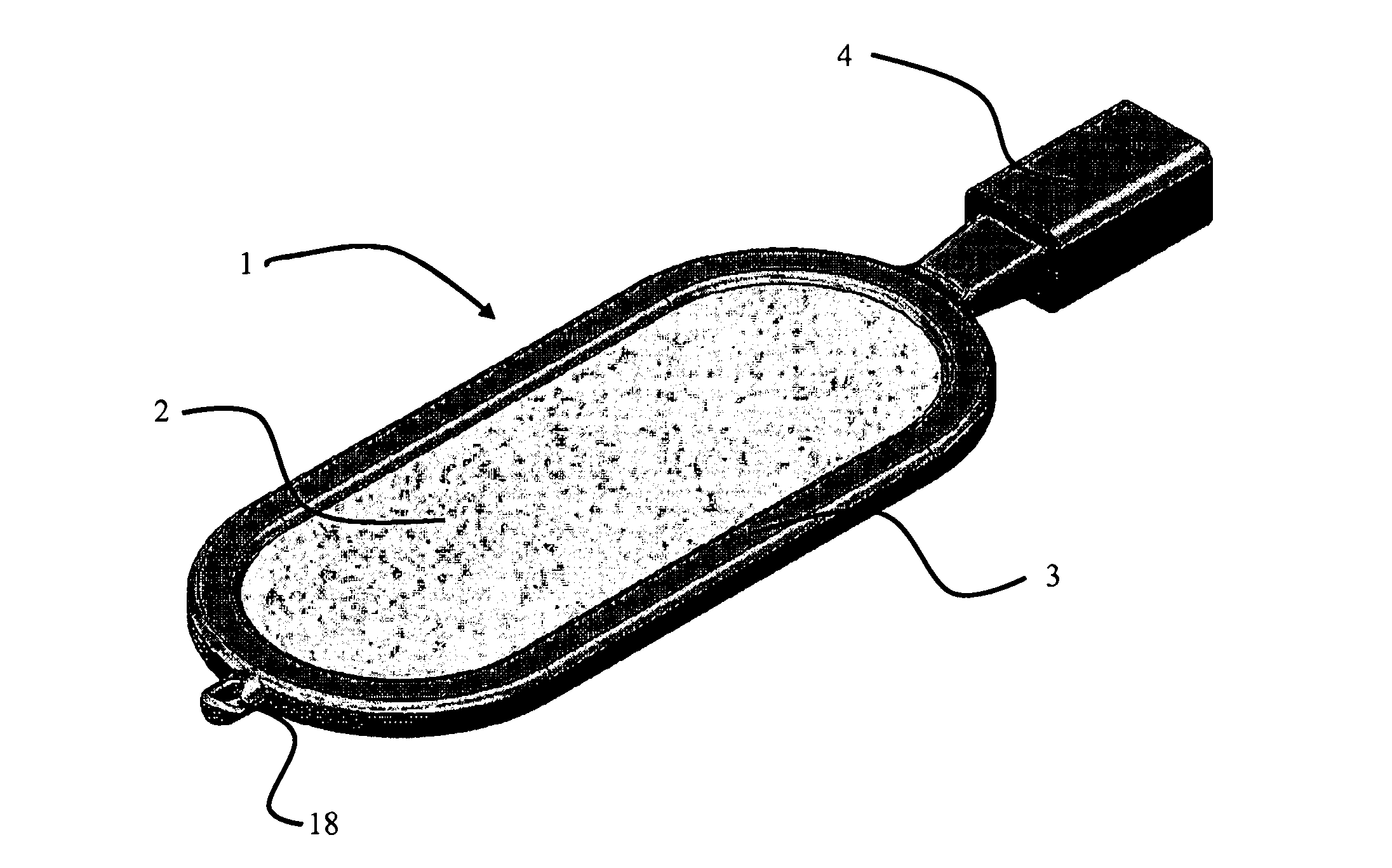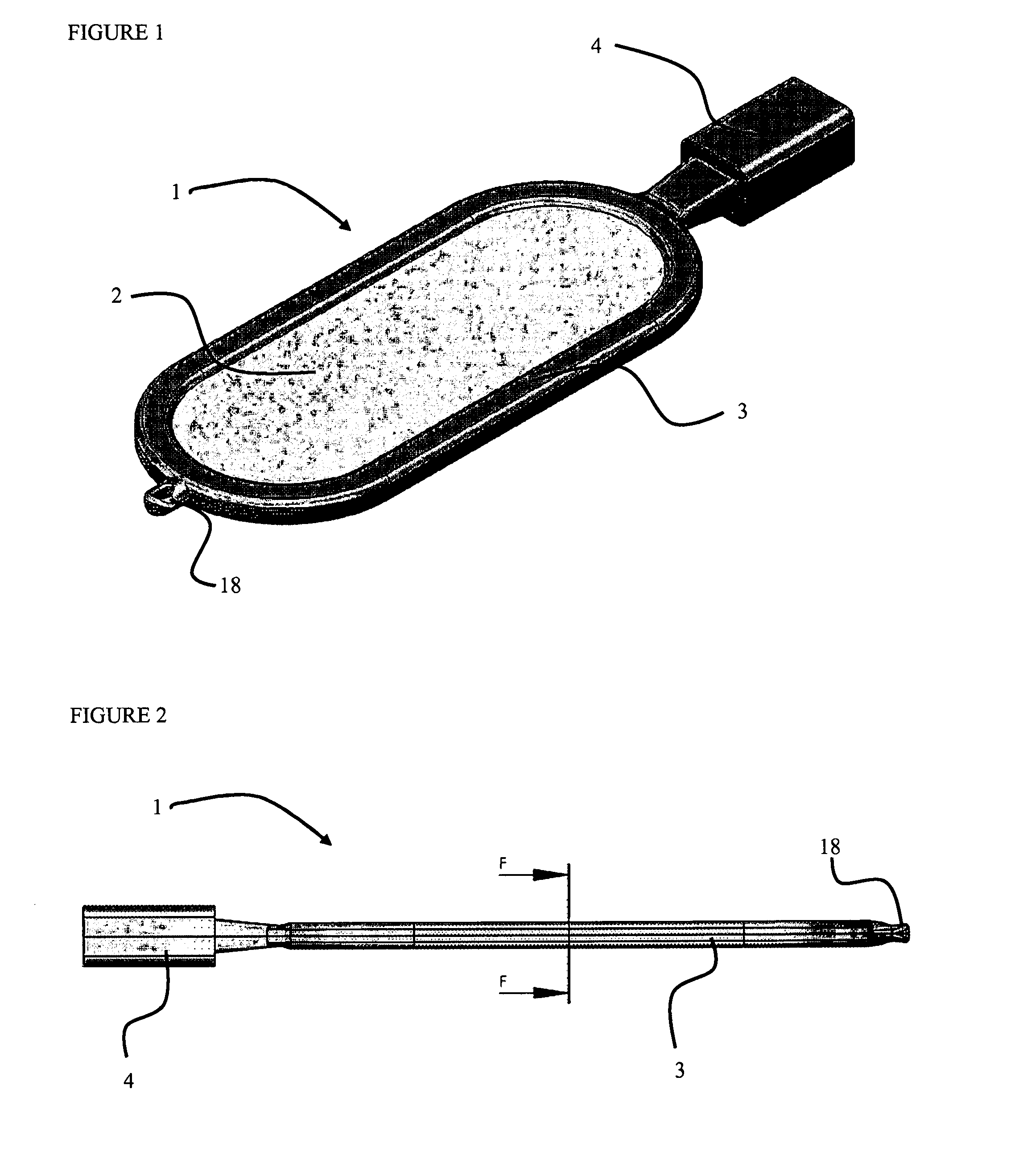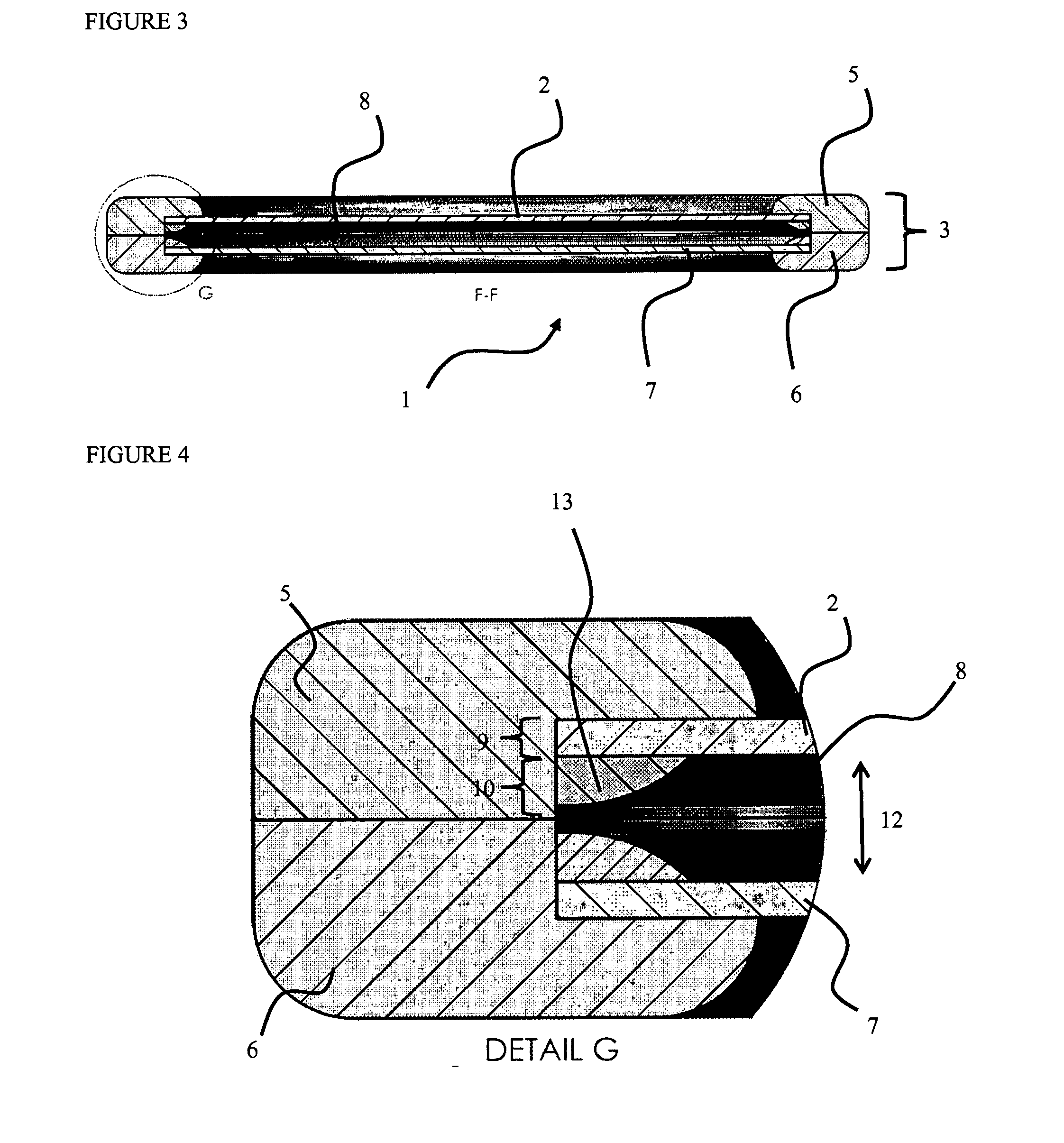Encapsulation device
a technology of biological agents and encapsulation devices, which is applied in the direction of drugs, prostheses, immunological disorders, etc., can solve the problem of preventing the access of immune system cells
- Summary
- Abstract
- Description
- Claims
- Application Information
AI Technical Summary
Benefits of technology
Problems solved by technology
Method used
Image
Examples
example 1
[0097]FIG. 1 shows one embodiment of an encapsulation device 1 according to the present invention. The device 1 comprises first and second semi-permeable layers surrounded by a supporting frame 3. In FIG. 1 only the first (uppermost) semi-permeable layer 2 is visible. The encapsulation device has an overall elliptical to rectangular shape, and further comprises a loading port 4 through which substances (including cells) can be introduced and an anchoring means 18 for positioning the device within a tissue in vivo.
[0098]FIG. 2 shows a side view of the same encapsulation device 1. The loading port 4 and the anchoring means 18 are integrated into the supporting frame 3. The perimeters of the first and second semi-permeable layers are fully enclosed by the support frame 3, and not visible in FIG. 2.
[0099]FIG. 3 shows a cross-section view through the encapsulation device 1 at a position F shown in FIG. 2. The device 1 comprises first and second frame elements 5 and 6 which interconnect t...
example 2
[0108]A renewable source of human beta cells would greatly benefit both fundamental research and cell therapy. Pancreatic progenitors can be differentiated from human pluripotent stem cells in vitro; the subsequent transplantation of pancreatic progenitors cells in vivo results in functional beta cell production. Schulz et al. (May 2012) PLoS ONE 7(5): e37004 discloses a protocol for the differentiation of pancreatic progenitors from a panel of pluripotent stem cell lines, yielding encapsulated functional beta cells in vivo. Using these newly established methods, the partially differentiated cells were encapsulated in a device as described in Example 1 to complete the differentiation of the iPSC-derived pancreatic progenitors in vivo (undifferentiated iPSC lines provided by Cellular Dynamics Inc.).
[0109]The progenitors were loaded into devices manufactured with several different membrane types in order to evaluate the best setup for optimal cell survival, vascularization, and functi...
example 3
[0112]Implantation of genetically engineered cell lines can be used to chronically deliver therapeutic proteins in vivo. The C2C12 mouse myoblast cell line was genetically engineered to secrete a therapeutic antibody. Cells were loaded into devices at a low density. The cell-loaded devices were implanted subcutaneously in adult mice under allogeneic conditions. Antibody plasma level was quantified from blood samples using a specific ELISA. Seven weeks after implantation, antibody was detected in mouse plasma. After 15 weeks, antibody level stabilized at approximately 40 μg / ml (see FIG. 13). Implants were retrieved after 19 weeks in vivo, and secretion level in vitro was measured. Devices were secreting in average 119 μg / 24 hrs (±66 μg / 24 hrs). Histological analysis revealed C2C12 cells surviving inside the device chamber at very high density.
[0113]In summary, these results demonstrate that a device of the present invention can sustain the progressive expansion and the survival of la...
PUM
| Property | Measurement | Unit |
|---|---|---|
| Permeability | aaaaa | aaaaa |
| Therapeutic | aaaaa | aaaaa |
| Perimeter | aaaaa | aaaaa |
Abstract
Description
Claims
Application Information
 Login to View More
Login to View More - R&D
- Intellectual Property
- Life Sciences
- Materials
- Tech Scout
- Unparalleled Data Quality
- Higher Quality Content
- 60% Fewer Hallucinations
Browse by: Latest US Patents, China's latest patents, Technical Efficacy Thesaurus, Application Domain, Technology Topic, Popular Technical Reports.
© 2025 PatSnap. All rights reserved.Legal|Privacy policy|Modern Slavery Act Transparency Statement|Sitemap|About US| Contact US: help@patsnap.com



